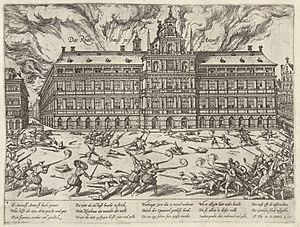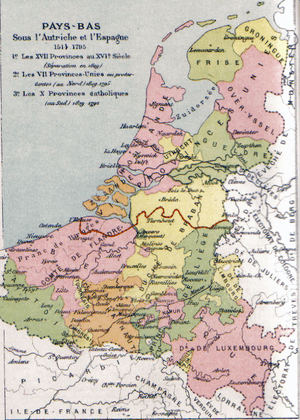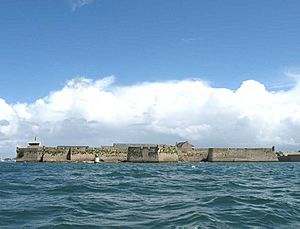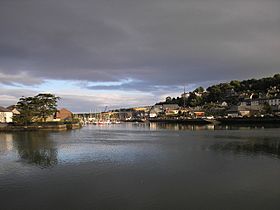Juan del Águila facts for kids
Quick facts for kids
Juan Del Águila y Arellano
|
|
|---|---|
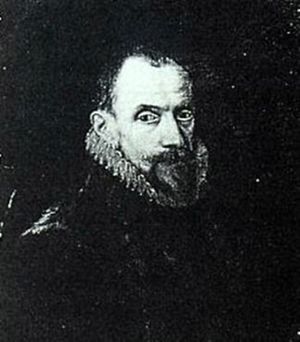
Juan del Águila
|
|
| Born | c. 1545 |
| Died | August , 1602 (aged 56–57) |
| Occupation | Spanish general |
Juan Del Águila y Arellano (born around 1545 in Ávila – died August 1602 in A Coruña) was an important Spanish general. He led Spanish army units called Tercios in many different places. These included Sicily, Brittany (in France), and later Ireland.
Juan Del Águila was a brave soldier. He became a Maestre de campo, which means he was a high-ranking commander. He served in many countries like Sicily, Africa, Malta, Corsica, Milan, the Netherlands, Spain, Portugal, France, and Ireland. He took part in major historical events. These included the famous Siege of Malta and the "Miracle of Empel" in the Netherlands. He also helped French Catholics during the French Wars of Religion and supported Irish clans in the Nine Years War.
Contents
Early Life and Military Beginnings
Juan Del Águila was born in Ávila in 1545. His family was part of the local nobility. He was the fourth son of Miguel del Aguila y Velasco and Sancha de Arellano. His grandfather was Lord Villaviciosa. Juan spent his childhood in a place called Berraco, which is now El Barraco.
Becoming a Soldier
In 1563, when Juan was eighteen, he joined a military company. This company was part of the Sicilian Tercio, a type of Spanish infantry unit. He served there for 24 years. The next year, he helped capture Peñón de Vélez de la Gomera, which was a pirate base at the time.
In 1565, he was part of the group sent to help defend Malta from a huge attack by the Ottoman army. A year later, he went to Corsica. There, he helped the Genoese people stop a rebellion.
Fighting in Flanders
In 1567, Juan Del Águila's unit, the Sicilian Tercio, moved to Flanders. This region is now part of Belgium and the Netherlands.
In 1568, the Eighty Years' War began. This was a long revolt against Spanish rule in the Netherlands. It lasted until 1648.
In 1569, Juan was promoted to lieutenant by Captain Pedro Gonzalez de Mendoza.
In 1574, Juan del Águila fought in the battle of Mook.
In 1576, his unit was sent to help defend Ghent castle. That same year, the soldiers in his Tercio stopped fighting because they hadn't been paid. They took over a town called Alost. Because of this, and the death of the governor, a general revolt started. Dutch troops entered Antwerp and surrounded the citadel. Juan del Aguila convinced his unpaid soldiers from Alost to march to Antwerp. They helped their fellow Spanish soldiers. They took the city, but it led to the famous and terrible Sack of Antwerp, where the city was looted.
Later in 1577, Juan del Águila was made a captain.
Moving Between Flanders and Italy
In May 1577, Juan del Águila's Tercio left Maastricht and headed for Lombardy in Italy. But in August, they were called back to Flanders to help bring peace. They fought for three years without getting paid. In 1580, the governor had to send the Tercios back to Spain.
In 1582, the Tercio was called back to Flanders again. They arrived in late July after a 40-day journey.
After capturing Tornhout castle in April 1583, Juan del Águila was made its governor. But this didn't last long. Three months later, on July 23, the city of Nieuwpoort surrendered to the Spanish. Juan del Águila became the new governor there.
Becoming a Commander (Maestre de Campo)
Leading in Flanders
On August 16, 1583, the commander of Juan de Águila's Tercio died. Just ten days later, at only 38 years old, Juan was named Maestre de campo. This was a very important leadership role.
At the end of 1584, the Siege of Antwerp began again. Juan de Águila and his Tercio fought very well. They defeated the Dutch who tried to rescue the city on May 27, 1585. After Antwerp was captured that summer, the soldiers finally received 37 months of overdue pay!
After taking Antwerp, part of the army was sent north. Their goal was to bring back Catholicism and Spanish rule to the northern Netherlands. Juan del Águila's Tercio was part of this army. In late November, they reached the Meuse river. The army split up, with some soldiers camping on the shore and others on Bommel island. Juan del Águila and his men were on the island.
The Dutch rebels then broke the walls that protected the area. The island flooded, leaving the Spanish soldiers isolated on a dam. On December 2, a Dutch fleet entered the flooded land to destroy the Spanish troops. Juan del Águila's men used their cannons to keep the enemy boats away. Meanwhile, the Dutch built forts very quickly.
The Spanish commander tried to get boats to attack the Dutch fleet, but they were destroyed. The situation looked hopeless.
That same night, the Spanish commander ordered an attack on the forts using the few boats they had. Suddenly, the temperature dropped sharply, and a strong wind began to blow. The water started to freeze! Because of this, the Dutch ships had to leave, fearing they would get stuck. The Spanish were then able to take the forts.
This amazing event became known as the "Miracle of Empel." The rebels supposedly said, "God has become a Spaniard!" From then on, the Spanish infantry started to honor the Immaculate Conception, who became their patron saint.
On January 24, 1586, Juan D'Aguila and his troops raided some German villages. They caused damage and stole goods.
Later in 1586, Juan del Águila's Tercio helped capture Grave (June 6), Neuss (July 26), and Alpen (August 13). They also helped rescue Zutphen (September 22), forcing the English army to stop their attack there.
On June 12, 1587, the siege of Esclusa began. In July, Juan del Águila was seriously wounded. Before he fully recovered, he was called to the Spanish royal court. He arrived in the spring of 1588. When he was presented to King Philip II, the king was told: "Your Majesty, meet a man born without fear."
The king gave him command of a new Tercio waiting in Santander. These troops were meant to be part of a second invasion of England. But in September, the plan was canceled after the disaster of the Great Armada.
Serving in Spain
After almost a year of waiting, Juan del Águila's Tercio sailed to A Coruña, arriving on August 17, 1589. Ten days later, they sailed again. This time, their job was to protect the fleet of ships coming from America as they finished their journey to Lisbon. They then returned to Galicia for the winter.
Meanwhile, in France, the king had been killed. The new king, Henry III of Navarre, was a Protestant. The Catholic League and Philip II could not accept this.
So, in August 1590, Juan del Águila's Tercio sailed from Ferrol to France to support the Catholics.
Campaigns in France
On October 25, 1590, Juan del Águila and his army landed in Nantes, in the region of Brittany. They set up their main base at the port of Blavet, which is now called Port-Louis. By the end of the year, they began building strong defenses for the city. They built a magnificent fort called "Fuerte del Águila" (Águila Fort), named after Juan del Águila himself.
On November 21, 1591, he captured the castle of Blain. On May 21, 1592, he defeated an Anglo-French army in Craon. He then chased the English part of the army and completely defeated them in Ambrières. On November 6 of that year, he captured Brest.
In 1593, some of Juan del Águila's army landed at Camaret. They built "La Pointe des Espagnols" (The Tip of the Spaniards) fort on the Crozon peninsula. This fort controlled the entrance to Brest port. In September 1594, he failed to help the town of Morlaix, which was under attack. This caused problems between him and the Duke of Mercour. On October 1, an Anglo-French army began to siege of Fort Crozon, while English ships attacked it from the sea. The Spanish soldiers inside could only hold out until November 15. Juan del Águila's army tried to help, but they were stopped. On November 19, the attackers stormed the fort. Only thirteen Spanish soldiers survived.
Raid on England
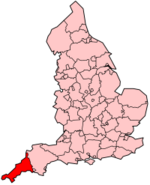
Juan del Águila decided to organize a surprise attack on England. This was because England was helping Henry IV of France, who was an enemy of Spain.
So, on July 26, 1595, three companies of musketeers from his Tercio sailed in four galleys. They were led by Captain Carlos de Amézquita. They first stopped in Penmarch for supplies. On July 31, they left for England and landed on August 2 in Mounts Bay, Cornwall. In just two days, the Spanish soldiers attacked and burned several towns, including Mousehole, Newlyn, Paul, and Penzance. They also took the heavy cannons from the British. Then, they got back on their ships.
On August 5, the day after sailing back to France, they met a Dutch fleet of 46 ships. The Spanish managed to escape, but not before sinking two enemy ships. On August 10, Amézquita and his men arrived back in Blavet as heroes. The whole trip resulted in only 20 Spanish casualties, all from the fight against the Dutch.
On May 2, 1598, the Peace of Vervins was signed. This agreement meant Spain returned all the places it had captured in France. In return, France gave back some areas in Flanders.
Because of this peace treaty, Juan del Águila and his Tercio had to return to Spain.
Back in Spain
The Tercio was sent to Cadiz. From there, they would protect Spanish ships coming from America.
In May 1600, Juan del Águila was put in prison. He was accused of taking too much money from the king's taxes. However, he was able to prove he was innocent. To make up for this, he was given command of a new mission: to support the Irish rebellion against England.
Expedition to Ireland
On September 2, 1601, 33 ships sailed from Lisbon, Portugal, heading for Ireland. There were 4,432 soldiers from Juan del Águila's and Francisco de Toledo's Tercios. Juan del Águila was the main commander of this mission. Their goal was to capture the port of Cork, which was a very important port in southern Ireland.
A strong storm scattered the fleet near Ouessant island. The admiral, Diego Brochero, managed to reach Kinsale on October 1 with most of the ships. So, most of the soldiers landed in Ireland. But eight or nine ships, carrying 650 soldiers and most of the supplies, had to return to Galicia.
As soon as they landed, the fleet went back to Spain to get more help. Juan del Águila was left with 3,000 men, isolated in Kinsale. Their Irish allies were far away and could only send about 900 new, poorly armed soldiers. Juan del Águila decided to build strong defenses and wait for more help. He built two forts at the entrance of the bay: Castle Park and Ringcurran.
Soon, an English army arrived. It had 10,000 foot soldiers, 600 horsemen, and many cannons. This army was led by Charles Blount, Baron of Mountjoy. Also, a small English fleet blocked the harbor.
In November, Mountjoy ordered an attack on Kinsale. The British captured the Ringcurran fort, but the Spanish quickly took it back. Soon after, Juan del Águila offered to surrender, but the English refused.
To rescue Juan del Águila's forces, the Irish leaders Aodh Mór Ó Néill and Red Hugh O'Donnell marched across Ireland. They traveled through a very harsh winter with 5,500 men. In Spain, Pedro de Zabiaur left port on December 7 with ten ships. He had 829 soldiers and lots of supplies. But another storm caused four ships to get lost. The rest reached Castlehaven, about 48 km south of Kinsale, on December 11. Local Irish nobles promised loyalty to the King of Spain and provided 550 foot soldiers and some cavalry. Also, the castles of Dunboy and Donneshed were given to the Spanish forces.
The English commander, Blount, learned about the new Spanish force. He sent a fleet of seven ships to Castlehaven to stop the Spanish ships there. On December 16, after five hours of fighting, the English sank one Spanish ship and captured another. They forced the Spanish to sink the rest of their own ships. The English succeeded and left, without losing any of their own ships.
On the morning of December 16, 1,500 Spanish men left Kinsale to try to break the siege. They destroyed twenty English cannons and killed over seven hundred English soldiers. But they had to return to the city, unable to get through the enemy lines. Spanish losses were low, which made their soldiers feel more confident.
An Irish rebel army from the north finally met up with the Spanish forces. They decided to help Juan del Águila. But Zabiaur, whose fleet was destroyed, wanted to keep control of Baltimore for future landings. So, he split his troops. He gave the Irish army 200 extra foot soldiers, while he and his other men secured their positions. In the end, just under 6,500 men headed for Kinsale.
By this time, the British army had been reduced to 8,000 men. Many had been killed by the Spanish, or had gotten sick, or had left.
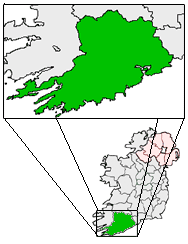
On January 3, the two armies met at Kinsale. The Spanish and Irish forces did not work together well. The Irish were also disorganized, and the English cavalry was much stronger. This led to a major defeat for the Spanish-Irish side in the Battle of Kinsale.
The Irish began the attack, but the English pushed them back. Some Irish soldiers started to run away. Then, the English cavalry attacked, chasing the fleeing Irish and causing many casualties. Spanish foot soldiers stepped in to prevent more deaths, losing 90 men and 52 prisoners themselves. Juan del Águila tried to leave the city with his men, but it was too late. In total, 1,200 Irish soldiers died at Kinsale.
On January 12, Juan del Águila surrendered. The terms of surrender meant the Spanish had to give up their forts and castles in Kinsale, Castlehaven, Dunboy, Donneshed, and Donnelong. In return, the Spanish army (now only 1,800 men) and any Irish who wished to go, would receive supplies and transport to return to Spain. They would also keep their weapons, flags, and money.
On January 14, just two days later, Martín de Vallecina arrived in Kinsale with more Spanish soldiers. But he returned to Spain as soon as he heard about the surrender.
Return to Spain and Death
On March 13, the fleet arrived in A Coruña. There, Juan del Águila paid for a hospital out of his own pocket to treat the many wounded soldiers.
He was kept under house arrest in A Coruña. This stopped him from going to Madrid to explain his actions in Ireland. A War Council was being prepared against him. However, he died in August before he could face it. It is believed that the stress of being under arrest, which was like a strong criticism of his military leadership, caused his death.
Aftermath
On July 12, 1603, the Supreme War Council decided that his surrender had "lost reputation." He was also accused of not leaving the city in time during the battle. However, Juan del Águila could not tell his side of the story because he was under arrest and then died. So, the Council made its decision without hearing his defense of Kinsale, where he had held out for three months against much stronger forces.
See also
 In Spanish: Juan del Águila para niños
In Spanish: Juan del Águila para niños


